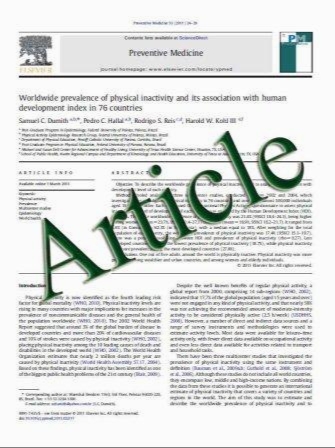Results of a phase II study of pemetrexed as first-line chemotherapy in patients with advanced or metastatic breast cancer
- نوع فایل : کتاب
- زبان : انگلیسی
- مؤلف : Nicholas J. Robert Paul R. Conkling Mark A. O’Rourke Paul R. Kuefler Kristi J. McIntyre Feng Zhan Lina Asmar Yanping Wang Oluwatoyin O
- چاپ و سال / کشور: 2010
Description
Palliation is the primary goal in metastatic breast cancer (MBC), and safe, efficacious, new singleagent options are needed. Pemetrexed, an antifolate, inhibits several folate-dependent enzymes involved in purine biosynthesis. The primary goal of this study was to determine the objective response rate in patients with advanced or MBC given pemetrexed as a first-line, dosedense, every 2-week chemotherapy. Women with HER2- negative advanced or MBC, without prior cytotoxic treatment for this stage of disease, were treated with intravenous pemetrexed 600 mg/m2 on Day 1 of each 14-day cycle. Standard dexamethasone, folic acid, and vitamin B12 premedications were given. 37 patients enrolled; 36 received C1 dose of pemetrexed and 35 were evaluable for response. Median age of patients was 61.4 years, 76% were hormone receptor positive (ER? and/or PR?). Prior treatment included adjuvant chemotherapy (57%) and/or endocrine (65%). Patients received a median of 6 cycles of pemetrexed (range, 1–21). Based on 35 evaluable patients, the overall response rate (ORR) was 26% (1 CR and 8 PR), and the clinical benefit rate (CR? PR? stable disease [SD] C6 months) was 40%. Median progression-free survival (PFS) was 4.1 months (range, \1–22.4). Median overall survival (OS) was 18.9 months (range, \1–27.7). Grades 3–4 treatment-related toxicities included: neutropenia (36%), leukopenia (17%), fatigue (14%), and anemia (14%). Grade 1/2 alopecia was seen in 8% of patients. This phase II study of dose-dense, singleagent pemetrexed showed moderate activity in the first-line setting with acceptable toxicity and no significant alopecia.
Breast Cancer Res Treat (2011) 126:101–108 DOI 10.1007/s10549-010-1286-0 Received: 1 November 2010 / Accepted: 29 November 2010 / Published online: 25 December 2010 Springer Science+Business Media, LLC. 2010


